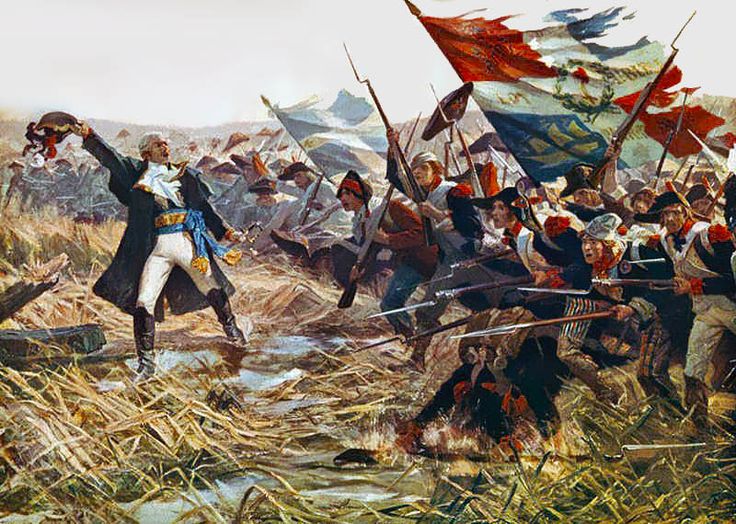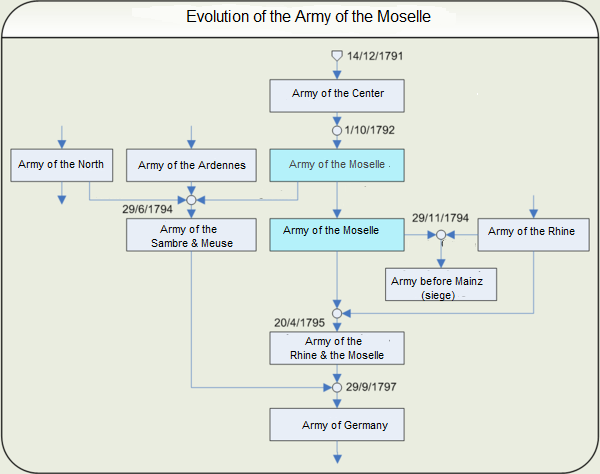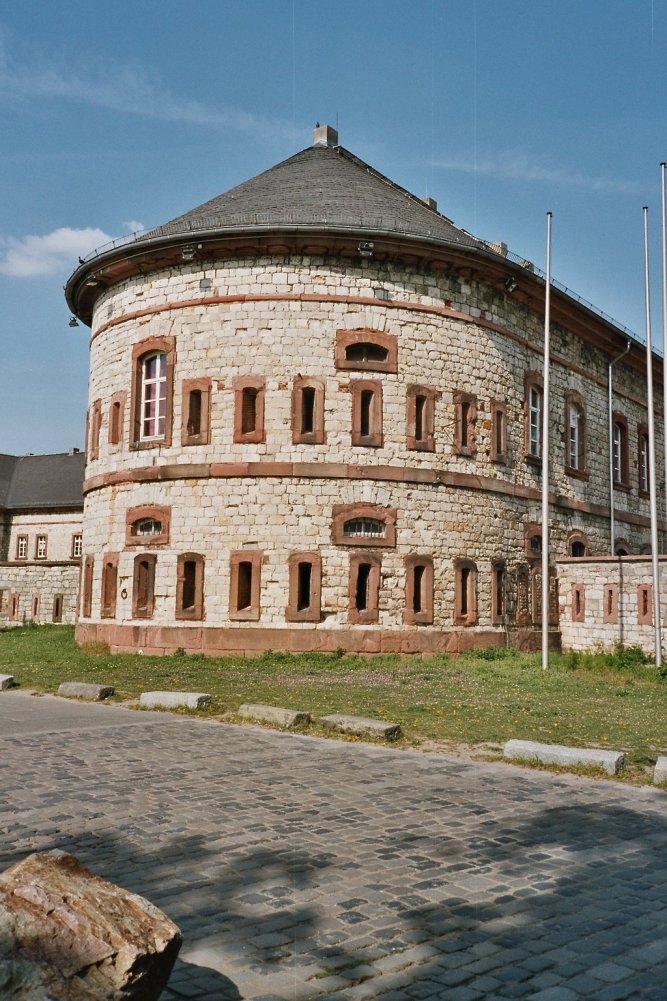|
Siege Of Luxembourg (1794–1795)
The siege of Luxembourg was a siege by French First Republic, France of the Habsburg monarchy, Habsburg-held Fortress of Luxembourg that lasted from 1794 until 7 June 1795, during the French Revolutionary Wars. Although the French army failed to breach the city walls, walls of the city, which were renowned as amongst the best in the world, the fortress was forced to surrender after more than seven months.Kreins (2003), p.64 Luxembourg's long defence led Lazare Carnot to call Luxembourg "the best [fortress] in the world, except Gibraltar", giving rise to the city's nickname 'the Gibraltar of the North'. The result of the capture of Luxembourg was the annexation of the Southern Netherlands into France on 1 October 1795. Most of Luxembourg (including all of the modern Grand Duchy), became a part of the Departments of France, département of Forêts, which was created on 24 October 1795.Kreins (2003), p.64–5 Background After taking Rheinfels Castle, the French were masters of ... [...More Info...] [...Related Items...] OR: [Wikipedia] [Google] [Baidu] |
Low Countries Theatre Of The War Of The First Coalition
The Low Countries theatre of the War of the First Coalition, in British historiography better known as the Flanders campaign, was a series of campaigns in the Low Countries conducted from 20 April 1792 to 7 June 1795 during the first years of the War of the First Coalition. As the French Revolution radicalised, the revolutionary National Convention and its predecessors broke the Catholic Church's power (1790), abolished the monarchy (1792) and even executed the deposed king Louis XVI of France (1793), vying to spread the Revolution beyond the new French Republic's borders, by violent means if necessary. The First Coalition, an alliance of reactionary states representing the Ancien Régime in Central and Western Europe – Habsburg Austria (including the Southern Netherlands), Prussia, Great Britain, the Dutch Republic (the Northern Netherlands), Hanover and Hesse-Kassel – mobilised military forces along all the French frontiers, threatening to invade Revolutionary France an ... [...More Info...] [...Related Items...] OR: [Wikipedia] [Google] [Baidu] |
Annexation
Annexation (Latin ''ad'', to, and ''nexus'', joining), in international law, is the forcible acquisition of one state's territory by another state, usually following military occupation of the territory. It is generally held to be an illegal act.: "Annexation means the forcible acquisition of territory by one State at the expense of another State. It is one of the principal modes of acquiring territory... in contrast to acquisition a) of terra nullius by means of effective occupation accompanied by the intent to appropriate the territory; b) by cession as a result of a treaty concluded between the States concerned (Treaties), or an act of adjudication, both followed by the effective peaceful transfer of territory; c) by means of prescription defined as the legitimization of a doubtful title to territory by passage of time and presumed acquiescence of the former sovereign; d) by accretion constituting the physical process by which new land is formed close to, or becomes attached to ... [...More Info...] [...Related Items...] OR: [Wikipedia] [Google] [Baidu] |
Guillaume Péduchelle , a French commune
{{disambig ...
Guillaume may refer to: People * Guillaume (given name), the French equivalent of William * Guillaume (surname) Other uses * Guillaume (crater) See also * '' Chanson de Guillaume'', an 11th or 12th century poem * Guillaume affair, a Cold War espionage scandal that led to the resignation of West German Chancellor Willi Brandt * Saint-Guillaume (other) * Guillaumes Guillaumes (; oc, Guilherme; it, Guglielmi) is a commune in the Alpes-Maritimes department in southeastern France. It was part of the historic County of Nice until 1860 as ''Guglielmi''. The Valberg ski resort is, in part, located on thi ... [...More Info...] [...Related Items...] OR: [Wikipedia] [Google] [Baidu] |
Hussar
A hussar ( , ; hu, huszár, pl, husarz, sh, husar / ) was a member of a class of light cavalry, originating in Central Europe during the 15th and 16th centuries. The title and distinctive dress of these horsemen were subsequently widely adopted by light cavalry regiments in European armies in the late 17th and early 18th centuries. By the 19th century, hussars wore jackets decorated with braid and shako or busby hats and they developed a romanticized image of being dashing and adventurous. A small number of modern armies retain the designation of hussars for some armored (tank) units. As well, some modern armies have ceremonial mounted units which wear historical hussar uniforms on parades or to provide a VIP escort to national leaders. Historically, the term derives from the cavalry of late medieval Hungary, under Matthias Corvinus, with mainly Serb warriors. Etymology Etymologists are divided over the derivation of the word ''hussar''. Several alternative theorie ... [...More Info...] [...Related Items...] OR: [Wikipedia] [Google] [Baidu] |
Jean-Baptiste Debrun
Jean-Baptiste is a male French name, originating with Saint John the Baptist, and sometimes shortened to Baptiste. The name may refer to any of the following: Persons * Charles XIV John of Sweden, born Jean-Baptiste Jules Bernadotte, was King of Sweden and King of Norway * Charles-Jean-Baptiste Bouc, businessman and political figure in Lower Canada * Felix-Jean-Baptiste-Joseph Nève, orientalist and philologist * Gui-Jean-Baptiste Target, French lawyer and politician * Hippolyte Jean-Baptiste Garneray, French painter * Jean-Baptiste (songwriter), American music record producer, singer-songwriter * Jean-Baptiste Alphonse Karr, French critic, journalist, and novelist * Jean-Baptiste Bagaza, chairman of Supreme Revolutionary Council in Burundi until 1976 and president of Burundi (1976-1987) * Jean-Baptiste Baudry, son of Guillaume Baudry, Canadian gunsmith bevear goldsmith * Jean-Baptiste Benoît Eyriès, French geographer, author and translator * Jean-Baptiste Bessières, duke ... [...More Info...] [...Related Items...] OR: [Wikipedia] [Google] [Baidu] |
Dragoon
Dragoons were originally a class of mounted infantry, who used horses for mobility, but dismounted to fight on foot. From the early 17th century onward, dragoons were increasingly also employed as conventional cavalry and trained for combat with swords and firearms from horseback. While their use goes back to the late 16th century, dragoon regiments were established in most European armies during the 17th and early 18th centuries; they provided greater mobility than regular infantry but were far less expensive than cavalry. The name reputedly derives from a type of firearm, called a ''dragon'', which was a handgun version of a blunderbuss, carried by dragoons of the French Army. The title has been retained in modern times by a number of armoured or ceremonial mounted regiments. Origins and name The establishment of dragoons evolved from the practice of sometimes transporting infantry by horse when speed of movement was needed. In 1552, Alexander Farnese, Duke of Parma ... [...More Info...] [...Related Items...] OR: [Wikipedia] [Google] [Baidu] |
Johann Wilhelm Von Schroder
Johann, typically a male given name, is the German form of ''Iohannes'', which is the Latin form of the Greek name ''Iōánnēs'' (), itself derived from Hebrew name ''Yochanan'' () in turn from its extended form (), meaning "Yahweh is Gracious" or "Yahweh is Merciful". Its English language equivalent is John. It is uncommon as a surname. People People with the name Johann include: A–K * Johann Adam Hiller (1728–1804), German composer * Johann Adam Reincken (1643–1722), Dutch/German organist * Johann Adam Remele (died 1740), German court painter * Johann Adolf I, Duke of Saxe-Weissenfels (1649–1697) * Johann Adolph Hasse (1699-1783), German Composer * Johann Altfuldisch (1911—1947), German Nazi SS concentration camp officer executed for war crimes * Johann Andreas Eisenmenger (1654–1704), German Orientalist * Johann Baptist Wanhal (1739–1813), Czech composer * Johann Bernhard Fischer von Erlach (1656–1723), Austrian architect * Johann Bernoulli (1667–1748), Swis ... [...More Info...] [...Related Items...] OR: [Wikipedia] [Google] [Baidu] |
Army Of The Moselle
The Army of the Moselle (''Armée de la Moselle'') was a French Revolutionary Army from 1791 through 1795. It was first known as the ''Army of the Centre'' and it fought at Valmy. In October 1792 it was renamed and subsequently fought at Trier, First Arlon, Biesingen, Kaiserslautern, Froeschwiller and Second Wissembourg. In the spring of 1794 the left wing was detached and fought at Second Arlon, Lambusart and Fleurus before being absorbed by the ''Army of Sambre-et-Meuse''. In late 1794, the army captured Trier and initiated the Siege of Luxembourg. During the siege, the army was discontinued and its divisions were assigned to other armies. History Originally known as the ''Army of the Centre'', it was renamed by decree of the National Convention on 1 October 1792 and kept under that name in the decrees of 1 March and 30 April 1793. By the decree of 29 June 1794 its left wing joined with the ''Army of the Ardennes'' and the right wing of the ''Army of the North'' to form the ... [...More Info...] [...Related Items...] OR: [Wikipedia] [Google] [Baidu] |
Claude Ignace François Michaud
Claude Ignace François Michaud (28 October 1751 – 19 October 1835) commanded French troops during the French Revolutionary Wars, rising to command the ''Army of the Rhine'' in 1794. After serving in a cavalry regiment from 1780 to 1783 he returned to civilian life. During the French Revolution he became lieutenant colonel of a volunteer battalion. In 1793 he was promoted to both general of brigade and general of division. He led a division at Haguenau and Second Wissembourg. When Jean-Charles Pichegru was transferred to lead the ''Army of the North The Army of the North ( es, link=no, Ejército del Norte), contemporaneously called Army of Peru, was one of the armies deployed by the United Provinces of the Río de la Plata in the Spanish American wars of independence. Its objective was fre ...'' in January 1794, Michaud was elevated to army command somewhat unwillingly. That year he led the army at Battle of Kaiserslautern (1794), Schifferstadt and the Battle of Tripp ... [...More Info...] [...Related Items...] OR: [Wikipedia] [Google] [Baidu] |
Army Of The Rhine (France)
An army (from Old French ''armee'', itself derived from the Latin verb ''armāre'', meaning "to arm", and related to the Latin noun ''arma'', meaning "arms" or "weapons"), ground force or land force is a fighting force that fights primarily on land. In the broadest sense, it is the land-based military branch, service branch or armed service of a nation or country. It may also include aviation assets by possessing an army aviation component. Within a national military force, the word army may also mean a field army. In some countries, such as France and China, the term "army", especially in its plural form "armies", has the broader meaning of armed forces as a whole, while retaining the colloquial sense of land forces. To differentiate the colloquial army from the formal concept of military force, the term is qualified, for example in France the land force is called ''Armée de terre'', meaning Land Army, and the air and space force is called ''Armée de l'Air et de l’Espace' ... [...More Info...] [...Related Items...] OR: [Wikipedia] [Google] [Baidu] |
Committee Of Public Safety
The Committee of Public Safety (french: link=no, Comité de salut public) was a committee of the National Convention which formed the provisional government and war cabinet during the Reign of Terror, a violent phase of the French Revolution. Supplementing the Committee of General Defence created after the execution of King Louis XVI in January 1793, the Committee of Public Safety was created in April 1793 by the National Convention. It was charged with protecting the new republic against its foreign and domestic enemies, fighting the First Coalition and the Vendée revolt. As a wartime measure, the committee was given broad supervisory and administrative powers over the armed forces, judiciary and legislature, as well as the executive bodies and ministers of the Convention. As the committee, restructured in July, raised the defense ('' levée en masse'') against the monarchist coalition of European nations and counter-revolutionary forces within France, it became more and more ... [...More Info...] [...Related Items...] OR: [Wikipedia] [Google] [Baidu] |
Fortress Of Mainz
The Fortress of Mainz was a fortressed garrison town between 1620 and 1918. At the end of the Napoleonic Wars, under the term of the 1815 Peace of Paris, the control of Mainz passed to the German Confederation and became part of a chain of strategic fortresses which protected the Confederation. With the dissolution of the Confederation and the Austro-Prussian War, control of the fortress first passed to Prussia, and, after the 1871 Unification of Germany, to the German Empire. 1839 In 1839 an article on Mainz in ''The Penny Cyclopædia'' stated that Mainz was one of the strongest fortresses in Europe, and a chief bulwark of Germany against France. At the Congress of Vienna, Mainz was assigned to the Louis, Grand-Duke of Hesse-Darmstadt, but it was decided that, as a fortress, it should belong to the German Confederation, with a garrison of Austrian, Prussian, and Hessian troops. This garrison in time of peace consisted of 6,000 men. The military governor, who retained his post ... [...More Info...] [...Related Items...] OR: [Wikipedia] [Google] [Baidu] |






